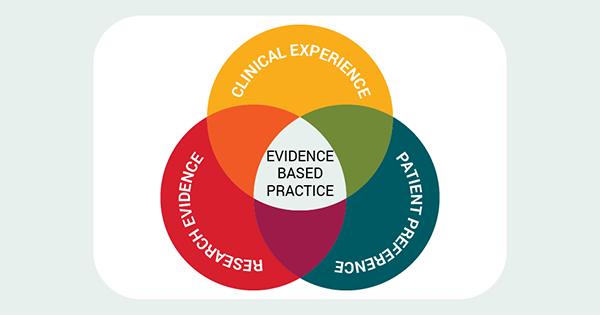In a previous article in this series, we identified there are many different research designs which we termed ‘research methodologies’ (Ellis, 2014). We also saw how the methodologies sit, chiefly, within one of two paradigms, or ways of seeing the world, qualitative and quantitative. The quantitative paradigm is used to research things that can be measured and quantified, and subjected to statistical description and analysis. Research in the qualitative paradigm, on the other hand, asks questions which relate to people’s understanding and beliefs about the world, as well as their experiences of it (Parahoo, 2014).
With regards to each of the paradigms, there are a number of methodologies which can be used to answer specific questions. It is important to choose the right methodology to fit the question, for example while a cross-sectional survey is a quantitative methodology, it cannot answer questions about cause and effect as might a randomised controlled trial or cohort study.
As well as choosing the right methodology, it is important to choose the correct tool or tools, method(s), for data collection. For example, interviews are commonly used in qualitative research methodologies, such as phenomenology and grounded theory (which seek deep understandings of people’s experiences), while clinical measurements and questionnaires, are better suited to quantitative methodologies like randomised controlled trials and cross-sectional surveys.
This article, the first in a miniseries about questionnaires, will explore when questionnaires might be useful data collection tools and their pros and cons. In the subsequent papers in this series we will consider issues such as deigning a questionnaire, as well as how to access the right people in the right place to get answers to the questions being posed.
Why questionnaires are useful
There are many reasons for using questionnaires, these are not limited to research, but include the need to evaluate a service or treatment, or an element of one of these, as well as for the evaluation of training sessions or assessing people’s general attitudes and opinions about an issue.
Many people are familiar with questionnaires like the friends and family test (Department of Health, 2012) which is a cross-sectional survey using a questionnaire. Such questionnaires are commonly used in everyday life both physically, as on paper or using a tablet, as well as online.
The Care Quality Commission (CQC, 2024) expect, as part of their single assessment framework, that health and social care providers seek feedback from service users and those important to them, as well as from managers and staff and other professionals and agencies people work with. The simplest way of achieving this is through the use of questionnaires, the results of which can be shared with the CQC, as well as being used for internal governance purposes. Such requirements will doubtless increase the use of questionnaires in health and social care settings.
As a tool for research, the questionnaire has many uses as the following examples show. In their research into the satisfaction of patients with a nurse-led wound care service, AlZayed and Lalithabai (2024) used a validated, previously proven, questionnaire — the client satisfaction questionnaire (CSQ-8). In their cross-sectional study, Obilor et al (2021) created their own questionnaire to measure nurses wound assessment knowledge, attitudes and competence. While Vogt et al (2020) used two validated questionnaires, the Wound Quality of Life and the Freiburg Life Quality Assessment (Wound Version), to assess the quality of life of patients with chronic wounds.
These examples show that questionnaires can be used in a variety of settings to measure responses to different sorts of questions. They also identify that some questionnaires are “validated”, something we will discuss in more detail later in this miniseries.
Questionnaires are generally useful for collecting data which is then quantifiable in some way. For example, how many people respond that their experience of the wound care clinic was “very good” or “good” when asked “Overall, how was your experience of our service?”.
The same questionnaire can be used repeatedly in the same setting to gain insight into how people perceive changes in the quality of a service provision both for research and governance purposes. For example, a manager might ask the question: “What percentage of patients respond that their experience of the clinic was ‘very good’ or “good” when a change was made to the way wound dressing are prescribed and how has this changed when compared to the answers given before the change?”
Having said that, questionnaires are useful for collecting quantifiable data, they can also be used to collect some qualitative information from participants. While qualitative data collected via questionnaires is not of the deep and rich standard of qualitative data collected in unstructured interviews, for example, it does have similar uses.
Taking our example of changes to the prescription of wounds dressings in the wound care clinic, it would be useful not only to know that people were more satisfied with their experience of the clinic but also why the change caused them to be so. Such qualitative data does not need to be deep in meaning to inform continuing positive change.
Qualitative surveys using open questions are becoming increasingly mainstream as traditional quantitative researchers explore their potential for achieving improved understandings of a topic from large groups of participants (Braun et al, 2017).
Pros of questionnaires
Questionnaires are usually a quick and relatively cheap way to gather data on a topic from a large group of people. They are generally easy to carry out and can be remarkably cost effective depending on how they are applied (Ellis, 2025).
Since questionnaires can be distributed by hand, post, email and in online forums and via social media, they have the potential to get to a large sample population of individuals very quickly and cheaply. This compares favourably to interviews, for example, which can be both time consuming and expensive (Ellis, 2025).
Because questionnaires can be designed to collect uniform answers to questions, for example by providing an answer scale such as “strongly agree” through to “strongly disagree”, they generate structured data which is highly amenable to statistical analysis regardless of the amount of data collected (Sreejesh et al, 2014). Depending on how they are undertaken, questionnaires can also be anonymous, which can be useful when collecting data on sensitive topics which people may be reluctant to discuss in an interview or focus group setting.
The other key advantage of questionnaires is that there are already many in existence which are validated and ready to use, as previously discussed. This means, in many cases, the process of designing the survey can be quick and simple and the quality of the date collected more or less assured.
Downsides of using questionnaires
Questionnaires are of value for answering some questions, but not others. For example, if you need to understand people’s experiences or perceptions of something in depth, then you need to interview them, rather than use a questionnaire (Creswell and Poth, 2017).
Questionnaire can also return disappointing outcomes. There are a few reasons for this which include:
- Response rates can be low, even with incentives.
- People can misinterpret questions
- Questionnaires are not able to adapt to the answers people give and so may lack depth
- The source of the questionnaire, the preamble and the actual questions can introduce bias
- Poorly designed questionnaires may not actually ask what they set out to ask.
Another very real issue for modern researcher is that some sections of society can be affected by survey fatigue because they are targeted for a lot of surveys (Ghafourifard, 2024). For example, patients are frequently surveyed about their experiences of care, while in everyday life we are bombarded with questionnaires about how good a delivery service was, the quality of a dining experience and our satisfaction with our utility suppliers.
Survey fatigue may also occur when questionnaires are overly long, such that people lose interest in answering questions and either stop altogether or skip questions (Ghafourifard, 2013).
Misinterpretation of questions is common, especially where the question setter is inexperienced. In some instances, this is because the question might be interpreted in many different ways, for example a simple question such as “how did you feel about your visit to the clinic today?” could be taken to mean, for example:
- Were you anxious before the visit?
- What emotions did the visit cause you?
- Were you generally satisfied with the experience of the visit?
- Did you get good news during your visit to the clinic?
- Did you experience pain during your examination?
Misinterpretation is also an issue where a question contains two or more questions, for example, “do you agree that your wound care nurse is knowledgeable and your wound is healing well?” Such double-barrelled questions mean people don’t know what they are answering (Choi et al., 2005) the question about the nurse or the one about their wound. The confusion can be compounded when the answers are multiple choice and the respondent may wish to say that their wound care nurse was knowledgeable, but that, at this time, their wound is not healing well.
Unlike face to face interviews most questionnaires, except a few designed to follow an algorithm, cannot adapt to the answers people provide. This means they do not represent what the participant is really thinking, only the closest approximation relating to the questions asked. This can, again, be compounded when the answers are multiple choice and the answers do not fit what the person wants to say but they feel, or are, compelled to answer anyway.
Conclusions
This article has identified that surveys generally sit in the quantitative paradigm of research methodologies because they usually collect data which is quantifiable. We identified how questionnaires are the dominant data collection tool when undertaking a survey be that for research or governance purposes.
We saw that quantifiable data is useful when comparisons need to be made over time or following a change, for example, in a service delivery. We have identified how some questionnaires are validated, that is previously proven to work in certain groups of people, while some questionnaires can be ambiguous or contain unanswerable questions.
We identified how questionnaires can be quick and relatively cheap to undertake and that they can be delivered by a variety of means making them a popular research tool. We also saw that people can develop survey fatigue both because of the number of surveys they are asked to do, as well as the length of some questionnaires.
In the next paper in this series, we will consider how to create a good questionnaire, as well as what is meant by a validated as opposed to an unvalidated questionnaire.



